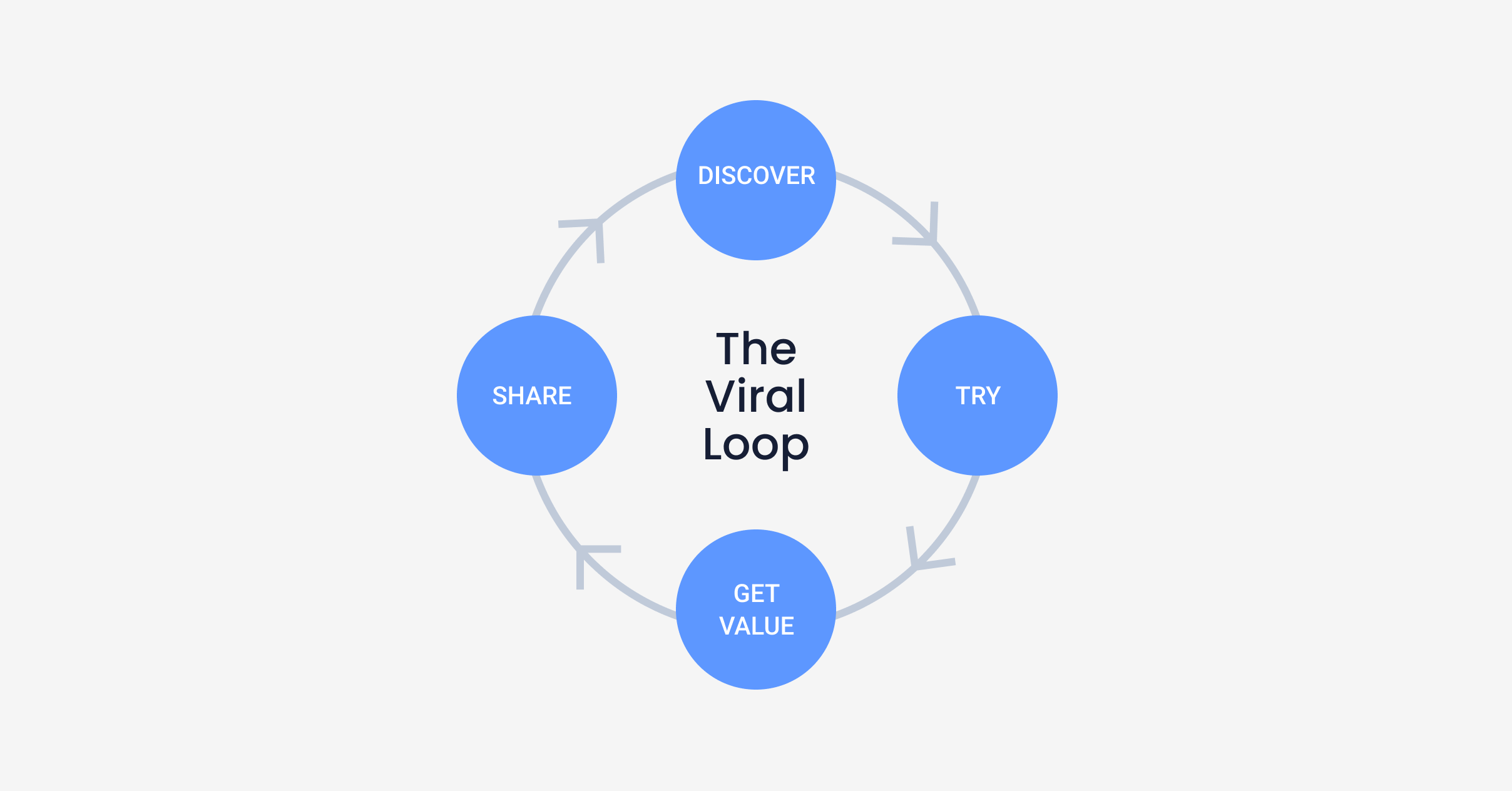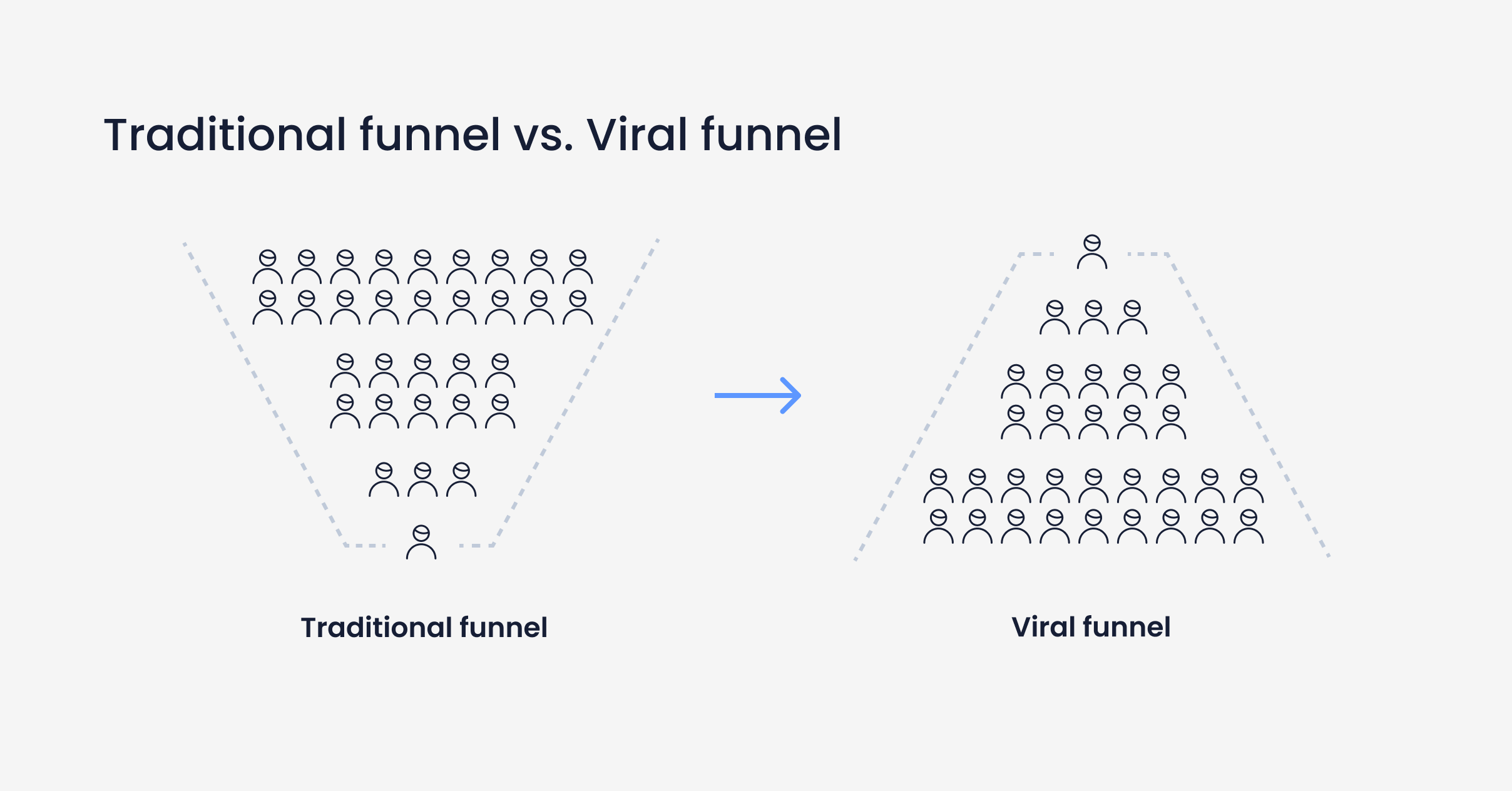How to Create a Viral App in 3 Steps
PUBLISHED
28 August, 2018

Growth Lead

Going viral is one of the biggest overarching aims within mobile app teams. Every mobile product manager would love to be part of developing a viral app.
Having a viral app is all about harnessing the power of the snowball effect. Your app will exponentially grow its user base, adding to healthier engagement rates and higher revenues. Focusing on achieving that viral status is actually more economical than paid advertising.
As an analytics solution, we at UXCam have a lot of experience in helping product teams uncover improvement areas within apps. Below we’ll discover the elements that all viral apps share, how to measure virality, and the practical strategies to encourage growth.
What is a viral app?
A viral app is one that users feel like they need to use as a part of their everyday lives. They are eager to share it with friends and family, or through mediums like social media.
Do you remember the Candy Crush Saga? That was a great example of app virality. Viral growth and user engagement are intrinsically connected. If your users are not engaging with your app, you cannot gain viral status. Virality is all about having strong user engagement.
Appventurz talks about viral apps being:
“[apps] that have the tendency to capture the attention of users, gets users hooked on the mobile app, and add value to their overall experience.”
How to measure app virality
Each one of your users has the potential to encourage more to download your app and become regular users. To measure this rate we can use the viral coefficient.
In the book, The Lean Startup, Eric Ries defines the viral coefficient as:
"how many new customers will use the product as a consequence of each new user who signs up.”
His theory is a coefficient greater than 1 will result in exponential growth, whereas a viral coefficient less than 1 will lead to very little growth.
What this figure represents is the number of new users each existing user brings. To exemplify this scenario, a viral coefficient of 2.0 means:
100 users bring in an additional 200 users; These extra 200 users subsequently bring 400 more users, and so on.
Why is knowing the viral coefficient important?
It keeps money in your pocket while your user base is constantly on the rise. If you can maintain a coefficient above 1 then you can keep your marketing budget at bay because your users are taking care of that for you organically.
To calculate the virality coefficient of your app, follow these steps:
Take the current number of users.
Multiply that amount by the number of referrals or invitation links sent out by those existing users.
Calculate the percentage of users that signed up through the referral program or invitation links (if 10% of new users signed up through 500 referrals, you’ll have an estimate of 50 new users).
Now divide the number of new users, by your existing ones to get the viral coefficient of your app (50 current users/50 new users would give you a coefficient of 1).
You might also be interested in Mobile App KPIs: Top 51 Metrics to Measure App Performance
The viral app loop
This concept of a couple of shares resulting in thousands is a process called 'the viral loop'.
As the diagram portrays, viral growth is about users discovering your app or product, trying it out themselves, enjoying the app and gaining value from it, and then sharing and discussing the app with their network.

The viral loop There are three main points to keep in mind to encourage your app to become viral: Step 1: Invest in some initial traffic to get the ball rolling - for your app to be shared, you need a good base of existing users.
Step 2: Make sure you’re building an engaging app that instills a sense of urgency in your audience. There are several techniques to use to make your app ‘sticky’ which will bring your users back more often because they feel a sense of inclusiveness.
Step 3: Provide incentives and rewards to give your existing users when they share your app with their friends. This could be an extended free trial, or a discount and should be easy to do. To encourage this you can use a mixture of communication channels.
The key to establishing this loop is the third step, these incentives need to be valuable, and that value should be substantial and immediate. The ideal sharing process is organic; users should genuinely want their friends, family, and colleagues to sign up to enjoy the app and use its great rewards.
Traditional funnel Vs. Viral funnel
Virality is not a marketing method. To better understand this, let's compare the way a conventional marketing funnel works to that of a viral one.
Traditional Funnel: Businesses dish out lots of cash via advertising in hopes that it will capture the attention of their target audience and result in further downloads. However, realistically only a small portion of that traffic ever gets converted into actual users.
The Viral Funnel: Compared to the structure of the traditional funnel, this one is flipped. Instead of a small portion converted from a large amount of traffic, a large portion of traffic is created by a few through the organic sharing of a viral app.

Traditional funnel vs viral funnel
There are two main ways that this type of quality traffic is generated organically:
1. A new user encourages their friends to download and try the app completely organically through word of mouth.
2. A referral code can be shared to provide mutual benefit to both the existing and the potential new users.
This second strategy is a highly effective way to encourage viral growth. However, if your business is still in the very early stages, this strategy has the potential of eating away at profits as discounts are given away before enough growth has been achieved.
Practical strategies to drive virality
First and foremost, a potentially viral app must engage its audience. While building your app include as many pleasantly surprising, enjoyable, and valuable elements in your app as is feasible.
To even have a shot at going viral, your app must include these four elements:
The sharing aspect must be defined by something valuable. Users must believe that by sharing this particular thing they will gain some sort of praise or appreciation.
Sharing and joining must be easy. People don’t have the patience to go through complicated steps, so ensure your onboarding process is simple and fast.
It should reward users for sharing. They’re the reason your business is relevant, thank them accordingly.
Don�’t let the app become stale. The more time one spends on the app, the more value one should reap.
The power of gamification
Gamification involves the inclusion of game-like elements that turn the user’s experience into one that involves a sense of accomplishment and recognition. Typical gamification strategies include:
Competitive elements like leaderboards or scoreboards.
A points system to build up rewards for purchases made.
Levels and badges for achievements.
You might also be interested in Using UX Gamification to Drive App Engagement (with examples)
Encourage investment
Investment, when it comes to creating a viral app, is less about monetary value and more about the amount of time a user spends in your app.
There is a concept coined the ‘sunk costs trap’ which refers to the notion in which users become more attached to a particular app or service the more resources we allocate to it.
For example, you’re way less likely to abandon a photo storing service such as Google Photos for a rival if you’ve been using it for a couple of years compared to just a few days. Organizing and transferring all those photos and albums across all devices would prove to be a huge hassle.
Encouraging investment increases user retention and users become much more likely to share an app that they are heavily invested in, versus something they deem as disposable.
Although virality can be difficult to get right and even harder to predict, it still occurs often enough within the app industry to make it a focus and a goal.
Working on making your user engagement metrics stronger and adding as much value and relevance in your app for your audience as possible will encourage organic sharability. Reward your users, both existing and potential, for sharing and downloading the app with tactics like discounts, extended free trials, or extra points to make it much more likely that users will share your app and be another step closer to becoming viral.
You might also be interested in:
AUTHOR

Jonas Kurzweg
Growth Lead
UX, marketing & product nerd. Coffee enthusiast. Working at UXCam.
What’s UXCam?
Related articles
Session Replay
Mobile Session Recording - The Complete Guide 2025
Why session replay is such a valuable feature, and what you should look out for when starting...

Annemarie Bufe
Content Manager
Product Management
14 Best Product Development Software for Every Team 2025
Discover the 14 best product development software tools to streamline collaboration, track progress, collect feedback, and build better products...

Tope Longe
Growth Marketing Manager
Product Management
13 Best Product Management Tools 2025 & When to Use Them
Find out the top tools that the best product managers use daily to perform better at...

Jane Leung
Content Director
